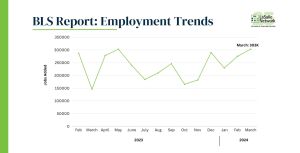This post from our CEO, Tom Gimbel, originally published on Inc.com.
We hosted an evening with the Chairman and CEO of the Chicago Cubs, Tom Ricketts, at Wrigley Field for a select group of our clients.
I’m a die-hard Cubs fan and a season ticket holder. I was a believer before the Cubs won the World Series in 2016. But regardless of whether you’re a Cubs fan, or even a baseball fan, what Ricketts shared is relevant to us all.
When the Ricketts family bought the Chicago Cubs in 2009, Chicago knew change was coming. The family laid out their three goals clearly and went to work making those goals a reality.
One of those goals was to win a World Series, and as Ricketts shared last night, they couldn’t even make it to the big dance unless they changed the way they were evaluating players and their performance.
He discussed the organization’s incorporation of analytics, virtual reality and artificial intelligence. He showed clips from Moneyball and talked about the real life story of the Oakland A’s and how they were the first team to start using analytics in baseball.
What Ricketts highlighted was that the way players were drafted before was rather arbitrary. The Cubs’ goal was to separate the outcome from the skill of the player. For example, although a pitcher may have a high ERA (earned run average), does the pitcher have effective pitches?
Think about that for a minute. Separate the skill and performance of someone from the outcome.
How many times do we do this in business? How many times do we evaluate someone’s skill level or aptitude for something vs. the end result? Was the sales person prepared for the pitch? Did they do the research and understand the client’s needs? Did they spend time building rapport, asking questions and identifying pain points before offering solutions? Ultimately, they may not have closed the deal, but was the skill and the performance there? Can they be coached to tweak a few things to improve their presentation and close the deal down the road?
Ricketts argued that an undesirable result doesn’t necessarily indicate a bad player. Was the pitch itself good, even if it got put in play? Sometimes, that’s not the case. Sometimes, a bad result does indicate a poor performer. Sometimes we need to use our resources, whether it be analytics, AI or other evaluation tools to determine if we can help that player, that employee, rise to the top.
If you’re looking to add to your team, let us help you find top players. Click here to learn more.







